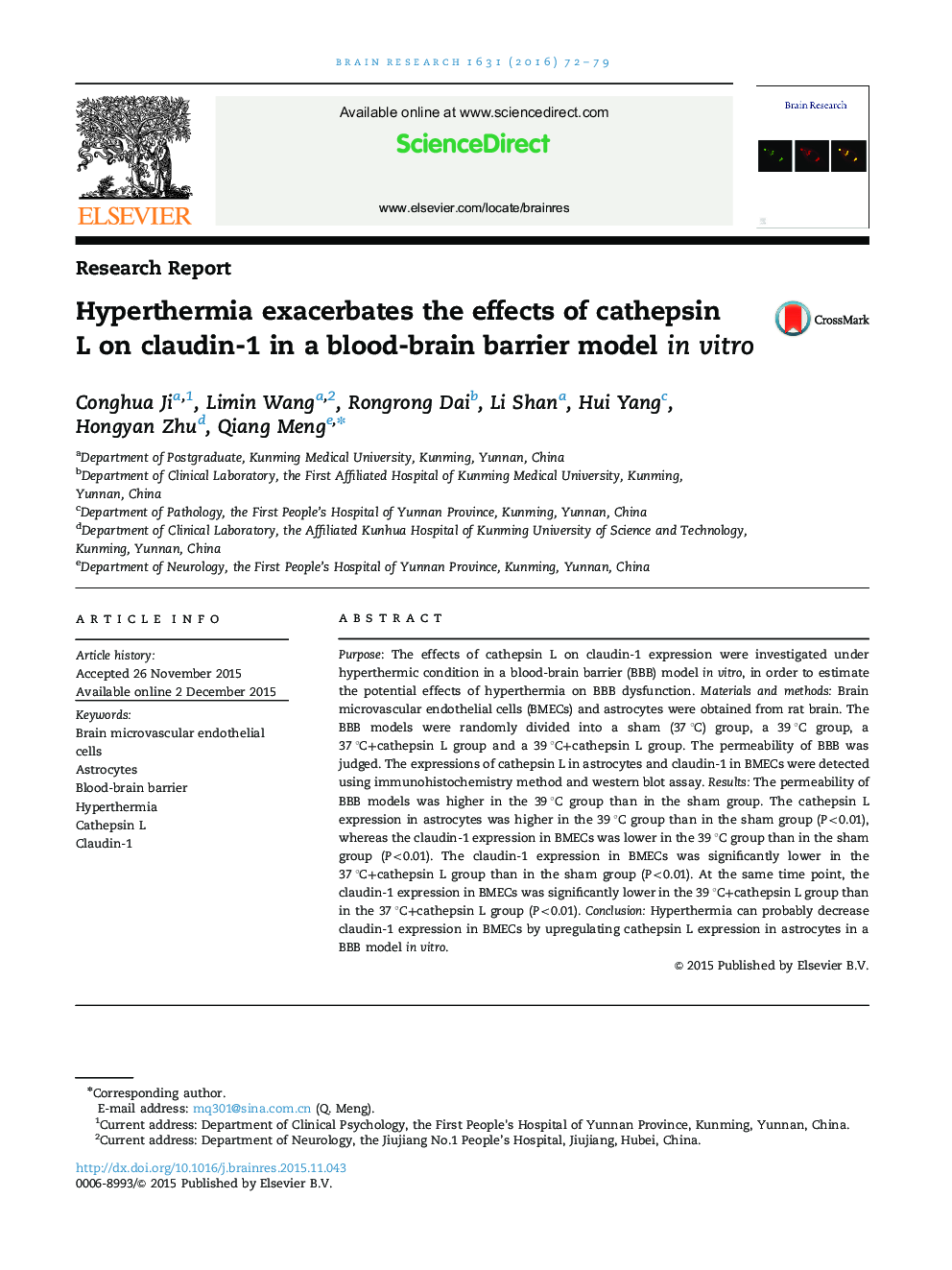| Article ID | Journal | Published Year | Pages | File Type |
|---|---|---|---|---|
| 6262626 | Brain Research | 2016 | 8 Pages |
â¢A blood-brain barrier model in vitro was made.â¢Evaluate the effect of cathepsin L on claudin-1 expression under hyperthermic condition.â¢Cathepsin L can reduce claudin-1 in brain microvascular endothelial cells in vitro.â¢Hyperthermia decrease claudin-1 by upregulating cathepsin L in astrocytes.
Purpose: The effects of cathepsin L on claudin-1 expression were investigated under hyperthermic condition in a blood-brain barrier (BBB) model in vitro, in order to estimate the potential effects of hyperthermia on BBB dysfunction. Materials and methods: Brain microvascular endothelial cells (BMECs) and astrocytes were obtained from rat brain. The BBB models were randomly divided into a sham (37 °C) group, a 39 °C group, a 37 °C+cathepsin L group and a 39 °C+cathepsin L group. The permeability of BBB was judged. The expressions of cathepsin L in astrocytes and claudin-1 in BMECs were detected using immunohistochemistry method and western blot assay. Results: The permeability of BBB models was higher in the 39 °C group than in the sham group. The cathepsin L expression in astrocytes was higher in the 39 °C group than in the sham group (P<0.01), whereas the claudin-1 expression in BMECs was lower in the 39 °C group than in the sham group (P<0.01). The claudin-1 expression in BMECs was significantly lower in the 37 °C+cathepsin L group than in the sham group (P<0.01). At the same time point, the claudin-1 expression in BMECs was significantly lower in the 39 °C+cathepsin L group than in the 37 °C+cathepsin L group (P<0.01). Conclusion: Hyperthermia can probably decrease claudin-1 expression in BMECs by upregulating cathepsin L expression in astrocytes in a BBB model in vitro.
